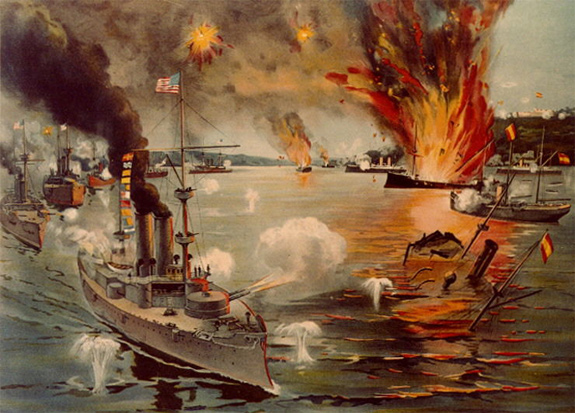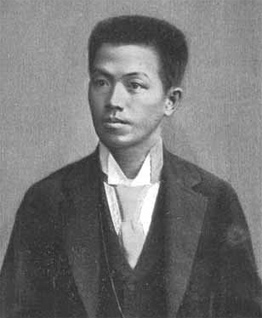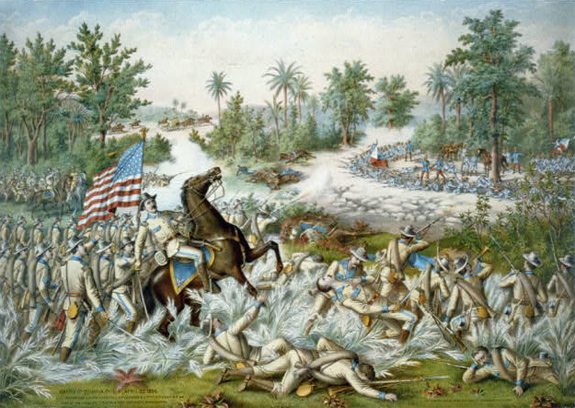
Source: Battle of Manila Bay, Naval History and Heritage
The first major battle of the war took place far from Cuba. On May 1, 1898, as depicted in the artwork below, Admiral Dewey led a surprise attack on the Spanish in Manila Bay, Philippines. Soon thereafter the Filipinos declared their independence, but neither the United States nor Spain recognized the declaration.

Source: Battle of Manila Bay, Naval History and Heritage
![]() Look at the map below. Locate the Philippines by placing your cursor over the islands.
Look at the map below. Locate the Philippines by placing your cursor over the islands.
Source: Southeast Asia, d-maps, http://geography.about.com

Source: Emilio Aguinaldo, Library of Congress
This is a portrait of a young Emilio Aguinaldo who led the Filipino independence movement against the United States.
The general mood in the Philippines was that one oppressor (Spain) had simply been replaced by another (United States). Led by Emilio Aguinaldo, the Filipino independence movement initiated a guerrilla war against the American troops.

Source: Battle of Quingua, Kurz & Allison, Library of Congress
This is a portrait of the Battle of Quingua that took place in the Philippine islands on April 23, 1899. In this battle scene, the American troops are in the foreground and they are advancing on Filipino troops.
Fighting in the Philippines quickly intensified, and the United States found itself fighting a new war despite an offical declaration of independnce by the Philippines. American soldiers acted more ruthlessly than before. They were burning whole villages, routinely shooting surrendering Filipino soldiers and for those captured, concentration camps were erected where thousands died. Media accounts excused the atrocities because the Filipinos were portrayed as savages needing America's help and cleansing.
In this activity, you will compare the U.S. war in Cuba to the U.S. War in the Philippines. Look at the statements below and identify whether they apply to the U.S. war in Cuba, U.S war in the Philippines, or both. Click on your selection and drag it to the appropriate place on the Venn diagram: